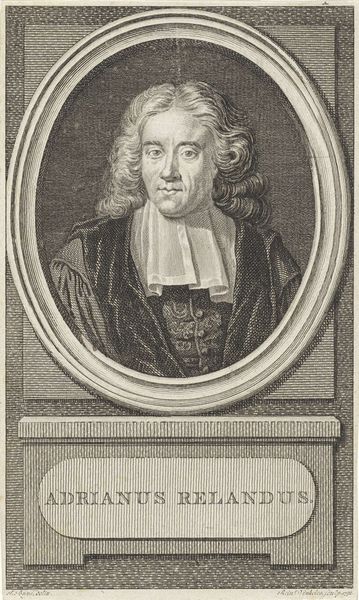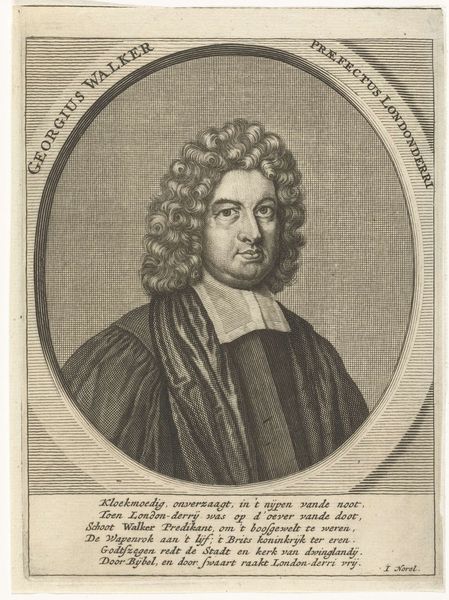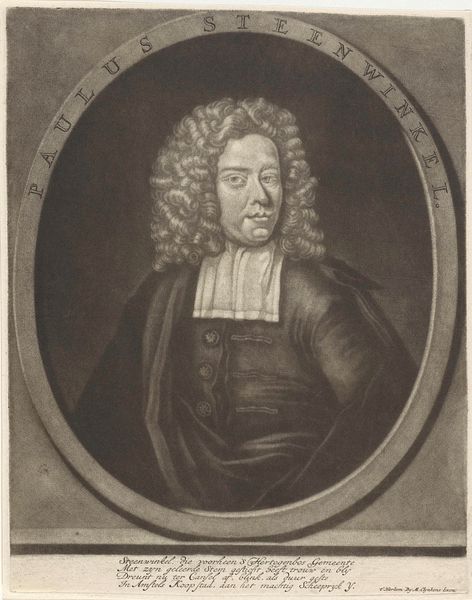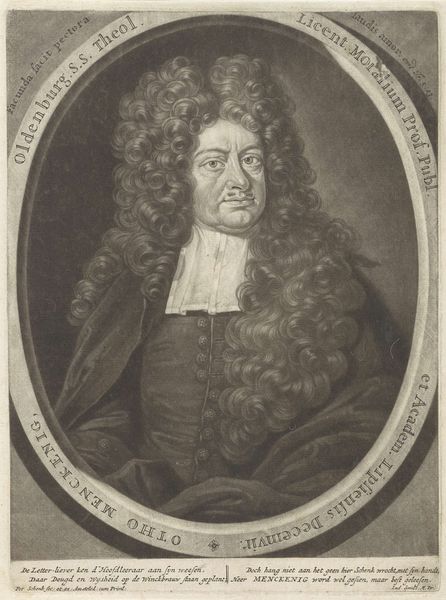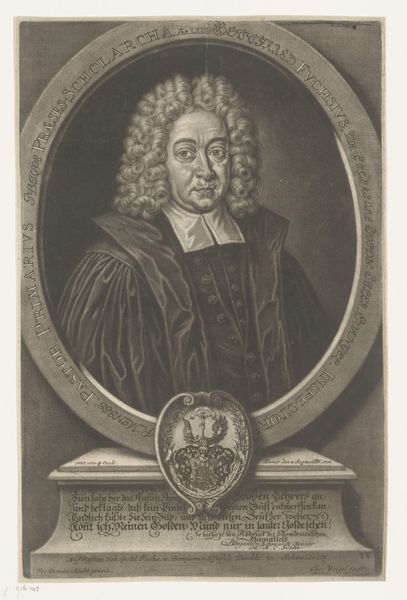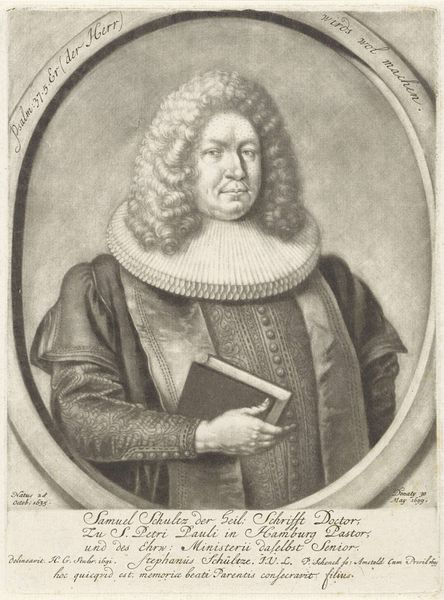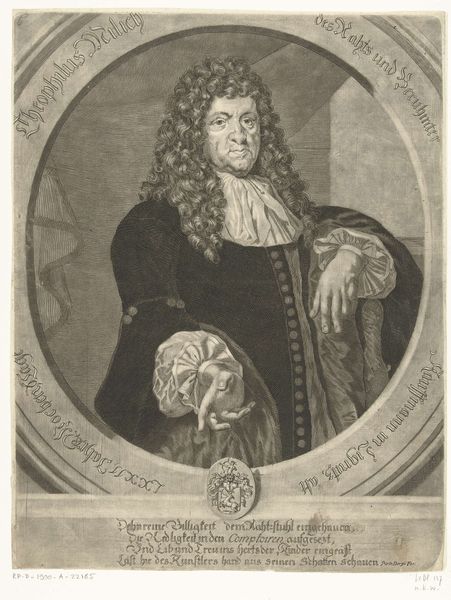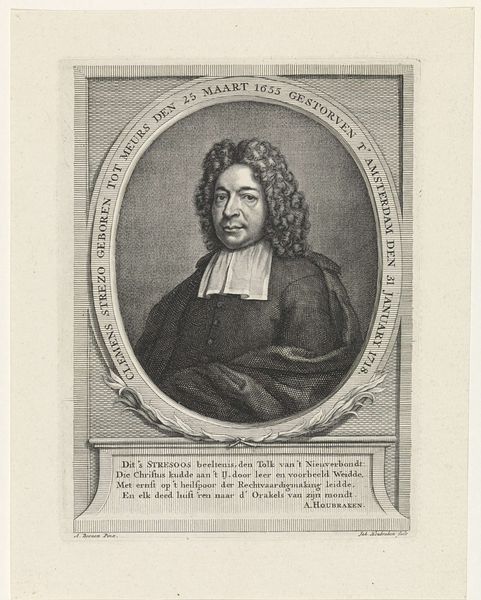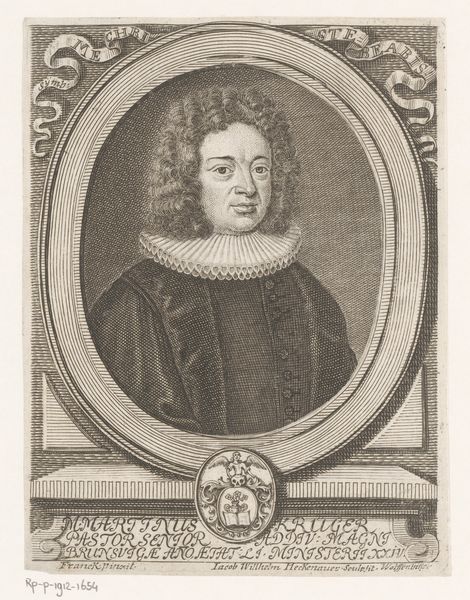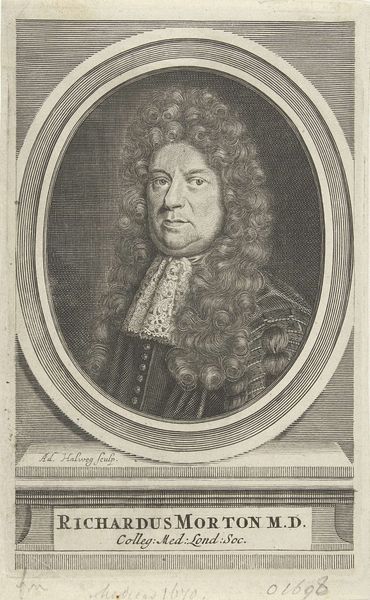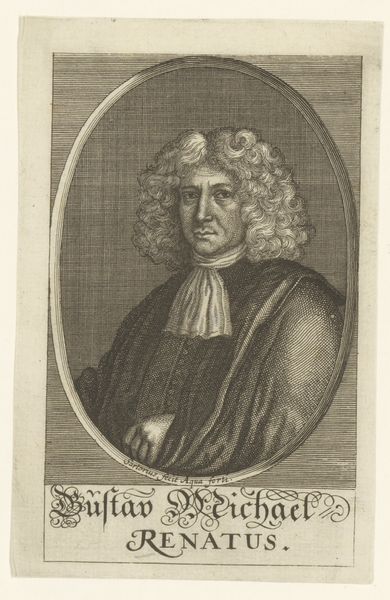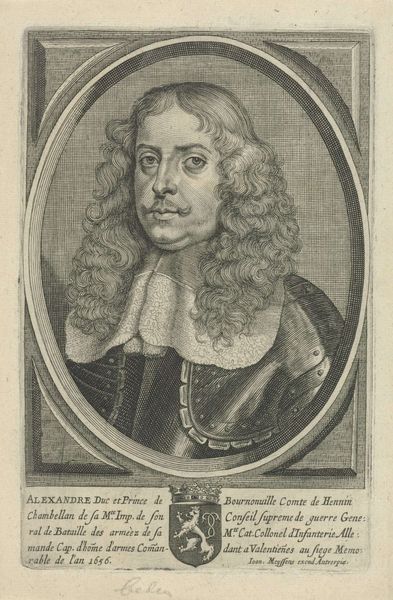
drawing, engraving
#
portrait
#
drawing
#
baroque
#
caricature
#
historical photography
#
portrait drawing
#
northern-renaissance
#
engraving
Dimensions: height mm, width mm
Copyright: Rijks Museum: Open Domain
Curator: Looking at this portrait, the overwhelming feeling it evokes is one of profound introspection. The eyes, though fixed, seem to gaze inward, reflecting a wealth of internal thought. Editor: Indeed. I'm drawn to Jacob Folkema’s 1748 engraving, titled "Portret van Petrus van Mastricht." What strikes me immediately is the way the ornate baroque frame contrasts with the subject's rather somber demeanor. It highlights the institutional context of portraiture, doesn't it? Curator: Precisely. Frames are so often psychological and symbolic devices. The flourishing leaves and decorative cherubs, perhaps symbols of intellect or even spiritual connection, juxtapose rather interestingly with his face, a countenance of severe intellectual rigor. The symbolic tension enhances, rather than detracts, from the subject’s inherent presence. Editor: Considering the socio-political climate, portraiture served as a powerful tool for projecting status and solidifying reputations. Note the text beneath, declaring Petrus van Mastricht’s titles. To be depicted as a pillar of society was as much about molding public perception as it was capturing likeness. This work emphasizes not only van Mastricht's likeness, but his academic credentials. Curator: Observe, too, how the artist meticulously renders the textures, from the elaborate curls of his wig to the stark white collar. Each element carefully articulated conveys both the literal detail but it evokes certain elements that define knowledge at the time. What does this symbolism impart to us? What did it impart to contemporary viewers? Editor: In terms of broader historical perception, a work like this reinforces a narrative of scholarly authority. Images of intellectual elites cemented social hierarchies; portraiture like this contributed actively to public understanding. So while we can see it now as a cultural artifact, back then, it helped create social norms and divisions. Curator: Well put. Considering van Mastricht's own stated belief written just below the central image--Als ik Swak ben, dan ben ik machtig--a reminder of inward power versus external expectation seems apt. Editor: I’ll think about Dutch portraiture differently from now on. Curator: And I will explore these portrait frames more intently. Thanks to this discussion, I notice elements previously overlooked.
Comments
No comments
Be the first to comment and join the conversation on the ultimate creative platform.
